-
Laser weapons on ships require reliable shipboard power
For the first time, a laser weapon system (LaWS) will be placed onboard a deployed ship, USS Ponce, for testing in the Persian Gulf in 2014. The U.S. Navy’s plan to put laser weapons on ships, makes the need for reliable, high-voltage shipboard power a matter of national security.
-
-
Smartphone technology to accelerate development of unattended sensors
DARPA wants to develop low-cost, rapidly updatable intelligence, surveillance, and reconnaissance (ISR) sensors – to be used by the military on the ground, in the air, at sea, and undersea – in less than a year, a marked improvement to the current three-to-eight year development process. It hopes to do so by using an original design manufacturer (ODM) process similar to that of the commercial smartphone industry.
-
-
Chinese government hackers steal designs of advanced U.S. weapons systems
The Chinese government has been conducting a broad, sustained, and disciplined campaign of cyberattacks against U.S. government agencies, critical infrastructure, private companies, and news organizations. The public version of a study prepared for the Pentagon by the Defense Science Board now says that Chinese government hackers have also been able to penetrate the computer networks of all the major U.S. defense contractors, stealing the designs and specifications of the most advanced weapon system in the U.S. arsenal, and gaining insights into broad technologies on which U.S. military advances are based.
-
-
Game changer: Russia to supply Syria with advanced S-300 air-defense systems
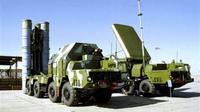
In what should be regarded as a major victory for Iran and its two regional allies, Syria and Hezbollah, Russia has announced it would provide Syria with advanced S-300 air defense missiles. The United States, Israel, and EU and NATO countries have been vigorously, and anxiously, pressing Russia not to go ahead with the sale of the missiles, because the deployment of the S-300 would make the imposition of a no-fly zone over Syria, let alone air attacks on targets inside Syria — like the ones Israel conducted in late January and early May — much costlier.
-
-
McCain meets with Syrian rebel leaders in Syria
Senator John McCain (R-Arizona) on Monday, Memorial Day, met with Syrian rebel leaders. McCain’s visit makes him the highest ranking U.S. official to enter Syria since the civil war began in 2011.Rebel commanders asked that the U.S. consider providing heavy arms to the Free Syrian Army, set up a no-fly zone in Syria, and conduct airstrikes on Hezbollah. McCain, for his part, asked the rebels how they planned to reduce the presence of Islamic extremists in rebel ranks.
-
-
New Obama policy sets higher standards for drone use
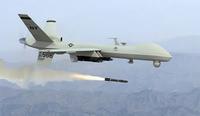
In a major policy speech Thursday, President Obama announced plans to set higher standards for the use of drones in the fight against terrorists. He defended the use of the unmanned vehicles in that war, however, including when, in extreme situations, they are used to kill American citizens.
-
-
Syrian army attacks Israeli army patrol; Israel retaliates, issues stark warning
Syrian forces have fired at an Israeli army patrol Tuesday, and for the first time since the beginning of the conflict in Syria, the Syrian government publicly took responsibility for the firing. In response, Israel launched a cruise missile and destroyed the Syrian position from which the Syrian soldiers fired into Israel. Israel’s military chief warned: “We will not allow the Golan Heights to become a comfortable space for Assad to operate from.”
-
-
Israel warns Assad: if you attack Israel, you “risk forfeiting [your] regime”
Israel has issued a highly unusual public warning to Syrian president Bashar al-Assad. The warning, couched in no uncertain terms, consists of two parts: First, if Syria and Iran again try to ship game-changing weapon system to Hezbollah, Israel will destroy these shipments, as it has already done three times, on 30 January, 3 May, and 5 May. Second, if Syria retaliated against Israel in the wake of such attacks, Israel would inflict crippling blows on the Assad regime and force Assad from power.
-
-
Master “remote” control for all military unmanned systems
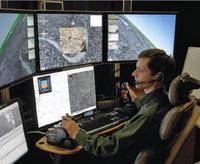
Historically, unmanned systems have been developed and fielded as individual items built by different vendors, which has led to increased spending, from $284 million in 2002 to more than $3 billion in fiscal year 2010. Researchers have developed something similar to a master remote control for separate components of differing brands of entertainment systems: it is called the Common Control System, and it will control military ground, air, and undersea unmanned systems across the services.
-
-
U.S. sharply disputes UN official's claim that Syrian rebels used chemical weapons
The United States sharply challenged claims by a UN official – who is not a member of the UN investigative commission looking into to the possible use of chemical weapons in Syria – that the rebels, rather than the Assad regime, used sarin nerve gas near the city of Aleppo on 19 March. The UN investigative commission looking into the incident distanced itself from the official’s comments.
-
-
Heavy Israeli air strikes near Damascus destroy Iranian missile shipment to Hezbollah
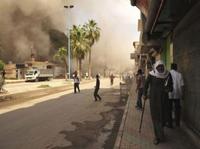
Israel launched heavy airstrikes Friday and Sunday on a military base near Damascus, destroying shipments of sophisticated Iranian Fateh-110 missiles to Hezbollah. These were the second and third such strikes in as many months. Israel’s first strike on Syrian targets took place on 30 January. That strike destroyed advanced SA-17 surface-to-air missiles the Assad regime was trying to ship to Hezbollah on orders of Iran.
-
-
Central Washington State proposed for a UAV research and testing site
The FAA Modernization and Reform Act of 2012 enacted by Congress calls for establishing six unmanned aircraft system research and testing sites in the United States. A consortium of Washington State-based organizations will soon submit the final section of a proposal to site an unmanned aircraft system research and testing facility in central Washington. If successful, the proposal to the Federal Aviation Administration (FAA) will result in the FAA naming the Pacific Northwest Unmanned Aerial Systems Flight Center as one of six U.S. testing facilities later this year.
-
-
Seeking new ideas for mobile ad hoc networks (MANETs)
Troops operating in forward locations without telecommunication infrastructure often rely on a mobile ad hoc network (MANET) to communicate and share data. A constraint with current MANETs is they can only scale to around fifty nodes before network services become ineffective. DARPA is exploring new technologies unencumbered by Internet Protocols (IP) which could be the key to enabling large MANETs. The Internet facilitated far-reaching technical advances, but in this technology area the Internet may be the roadblock.
-
-
U.K. businessman convicted of selling fake explosives detectors
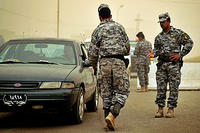
James McCormick, a British businessman, was convicted of having made millions in profits from selling fake bomb detectors to Iraq, Georgia, and several other countries. McCormick bought $20 golf ball finders in the United States, then sold the devices, which had no working electronics, for $40,000 each. The Iraqi government used more than $40 million in U.S. aid money to buy 6,000 of the devices, despite being warned by the U.S. military that the devices were a sham. The Iraqi military used the fake detectors at check-points, leading to scores of soldiers and civilians being killed by suicide trucks which went through the check points undetected. The police in Kenya says it will continue to use the devices.
-
-
New fertilizer can be used to grow food – but not build bombs

Ammonium nitrate fertilizer is used in agriculture, but when mixed with a fuel such as diesel, it is highly explosive. It was used in about 65 percent of the 16,300 homemade IEDs in Afghanistan in 2012.About 1,900 troops were killed or wounded in IED attacks in 2012, 60 percent of American combat casualties. There have been more than 17,000 global IED incidents in 123 countries in the past two years. Timothy McVeigh used ammonium nitrate in Oklahoma City in 1995. Scientists have developed a fertilizer that helps plants grow but cannot detonate a bomb.
-
More headlines
The long view
Factories First: Winning the Drone War Before It Starts
Wars are won by factories before they are won on the battlefield,Martin C. Feldmann writes, noting that the United States lacks the manufacturing depth for the coming drone age. Rectifying this situation “will take far more than procurement tweaks,” Feldmann writes. “It demands a national-level, wartime-scale industrial mobilization.”
